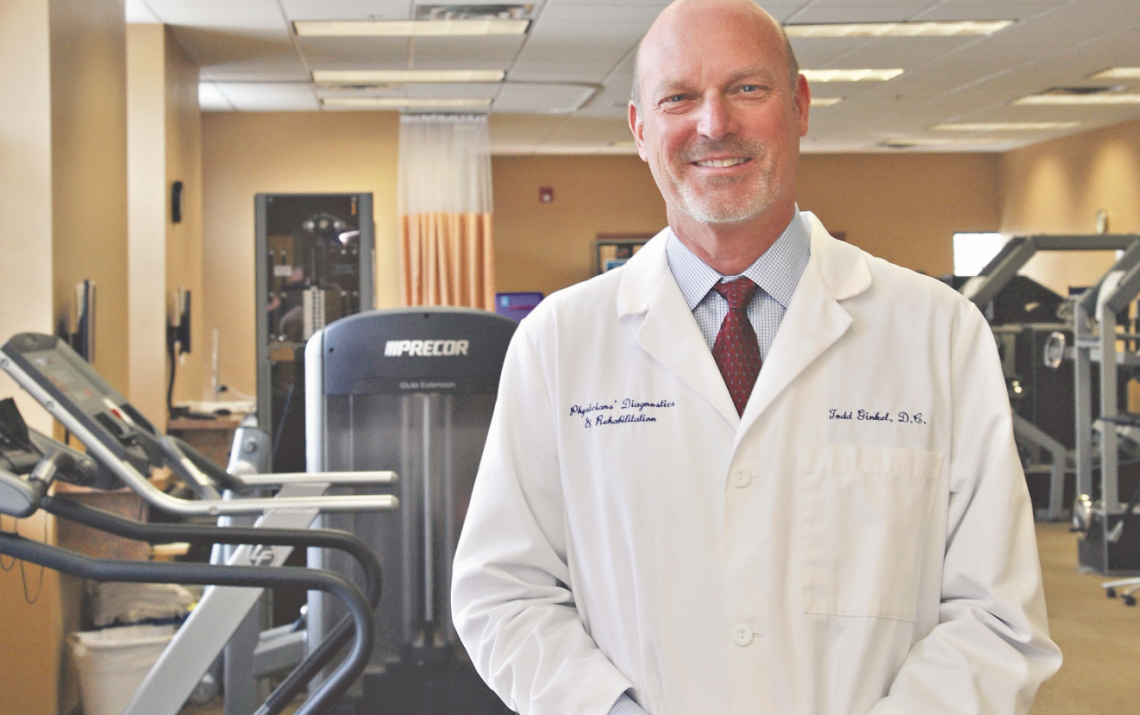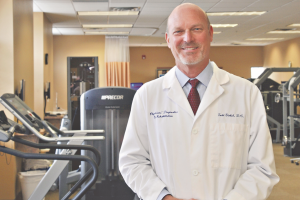In an age where health care costs continue to rise and governmental remedies are failing, employers are looking for solutions to keep things affordable without sacrificing quality care. The answers may lie in private sector innovation, with employers and health care providers working together to solve the problem.
Since 1994, Physicians’ Diagnostics & Rehabilitation Clinics (PDR) have been providing non-surgical treatment for chronic back and neck pain using evidence- based protocols that reduce pain, increase mobility and keep individuals active and involved in their customized treatment plan. They do not prescribe narcotics, nor order imaging, injections, procedures or surgery except when clinically indicated. PDR’s program also helps prevent surgical intervention.
“With 30 percent of the population suffering from back pain at any given time, back pain has become one of the costliest conditions for employers due to direct health-related costs and indirect costs such as missed days from work,” said Dr. Todd Ginkel, founder and CEO of PDR. “And, in about 85 percent of cases of back pain, the pain generator cannot be identified, making it very difficult to solve with a ‘quick fix’ or to obliterate the source of pain with a procedure.”
Tracy Rheineck, administrator for PDR, added, “From our perspective at PDR, we’re looking at function instead of anatomy. We improve strength and range of motion, and often, the pain resolves. People become more conditioned and participate in activities again, which can also impact their mental well-being. PDR is also a strong return to work, stay at work advocate – encouraging people to keep working and participating in their regular daily activities. The better their emotional health is, the better they tend to do in our program.”
Ginkel continued, “They are also less likely to exacerbate and unnecessarily escalate to expensive treatments like imaging, injections and surgery.”
PDR believes getting the “right care” at the “right time” is not only helpful in saving the employer money, it is critical for the patient and their ultimate outcome, as well. PDR is developing a number of options that would allow it to work directly with employers to assure this can be accomplished. “Employers win from several standpoints. The employee is healthier and happier; the employer keeps the employee at work and productive; and they save money on their health care expenditures because waste and redundancy is eliminated and high-cost interventions are often avoided,” said Dr. Ginkel.
Mick Hannafin, vice president and benefits practice leader at Associated Benefits and Risk Consulting, works with employers to help manage the cost of healthcare and other employee benefits. He is helping to bridge the gap between companies looking for sustainable health care solutions and care providers like PDR. He said, “We see companies putting in high-deductible plans with health savings accounts as a measure to get employees engaged and involved in the total cost of health care. But we are seeing more and more care gaps in our clients’ data, meaning people are not accessing care when they should or they are not filling medications that have been prescribed to them because of the cost. This level of patient noncompliance creates a whole different level of health risks for the person and their employer. Employees become more susceptible to worsening health conditions, work-comp injuries, absenteeism and presenteeism (when employees are present but not really ‘there’ due to illness). Employers are looking at new ways to manage both health and health care risk more efficiently, through their health plan, their culture or with alternative programs that make it easier for their employees and families to access the most appropriate care based on their situation.”
Hannafin gave a quick example of how costs can escalate when an employee with high out-of-pocket costs suffers from back and neck pain:
For example, an employee with a $2,000 deductible is told they are a great candidate for physical therapy (PT) for their back pain. To complete the PT program, they will need to go to therapy 10- 15 times, at an average cost of $150 per visit. The employee will have to pay for more than 13 of those visit out-of-pocket ($1,950) before their deductible is met. Now add that they will have to take time off from work or use vacation time to attend therapy and that physical therapy is hard, and it hurts – employees start rethinking their care options. It may sound easier to take a pill or get an injection. But when a patient doesn’t get the care they really need, their condition worsens, potentially leading to a much more costly spinal injections or surgery, with extended time off from work – and the employer is left footing the bill.
Hannafin concluded, “We need to rethink this scenario from a patient and employer perspective. What are the behavioral health and socioeconomic issues that create obstacles to care?”
Rheineck responded, “We’re ready to align with employers to help them create benefits so their employees can have easier access and better outcomes.”
Many companies are now opting to partially or wholly self-insure. An upside to this strategy is that it gives companies more access to data they can use to quantify health care expenditures and outcomes, empowering them to create the same efficient matrices around employee health that they do around running their businesses. Hannafin stated, “Those who are fully insured get rate and renewal information once a year and very limited claims data, whereas those who are self-insured get reports monthly and much deeper data-mining ability. It opens more opportunities to ask questions about why, where and how healthcare is happening, as opposed to just how much it costs.”
Hannafin encourages companies to look at their employee populations to understand utilization patterns and condition prevalence and then develop programs and benefits around their specific needs. Solutions can be creative, with options like specialized programs for spinal health, diabetes, COPD, cardiovascular conditions and preventive care; onsite care to reduce time away from work and promote early intervention; and even telephonic assessments to help diagnose and/or monitor health conditions at a lower cost. Simply put, find strategies that create broad access at the lowest cost so people are getting the care they need at the right time and place.
Another strategy is to directly partner with trusted, proven care providers to act as a “care manager” in specific areas, such as spine, to help employees access the most appropriate and effective care. As part of the partnership, the care manager could provide additional services aimed at educating, training and supporting employees to make smarter choices that keep them healthy, active and safe on the job and at home. The forward-thinking professionals at PDR are poised to do just that.
Effective health care is about more than the bottom line. It’s about taking good care of people. The net benefits to employers include increased job satisfaction, higher employee retention, greater productivity, lower operating costs, and best of all, vibrant employees – people who feel good and feel good about where they work.
Physicians’ Diagnostics & Rehabilitation Clinics | (952) 908-2700 | www.pdrclinics.com | Five Twin Cities Locations.







